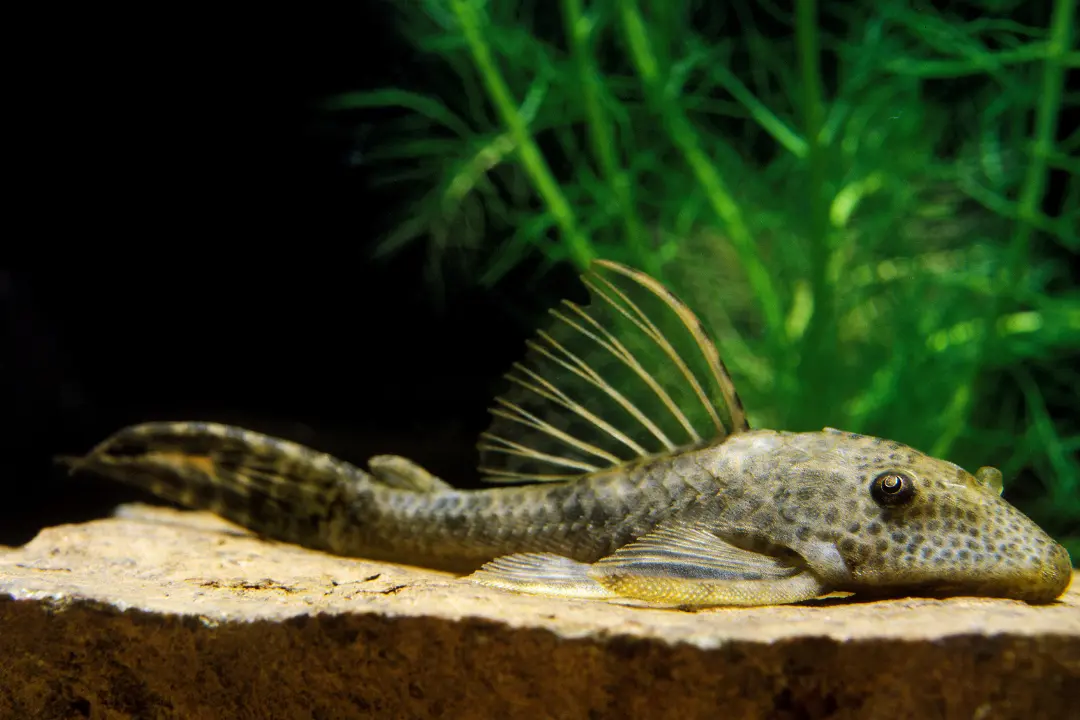We understand your curiosity about the Sucker fish. These captivating creatures offer much more than just clean aquarium glass, rather they can become the centerpiece of your aquarium. With varying sizes, shapes, and personalities, the sucker fish can match any aquatic aesthetic.
Sucker for a good time? We’ve got the fish for you. They call them bottom feeders, but these underwater janitors are anything but boring! Having a built-in vacuum as a mouth makes them natural algae assassins.
But these underwater cleaners aren’t just algae-cleaning water filters. These armored suckers can grow into giants, having impressive and intriguing bodies and patterns.
This beauty with brains isn’t just an average algae cleaner, rather this majestic marvel boasts lifespans longer than average human beings. This makes them an ideal pet for a long-term partnership with their owner.
To add a touch of extraordinary to your aquarium, take a Dive into the world of sucker fish! The Aquarium cleanup crew.
Quick Care Guide
| Minimum Tank Size | 75 gallons (recommended) |
| Water PH | 6.5 to 7.5 |
| Water Temperature | 74°F – 80°F |
| Care Level | Easy to moderate care level |
| Maximum Size | 3 feet (1 meter) |
| Tank Mates | Yes (similar or smaller fish are ideal) |
| Diet | Omnivores (primarily algae eaters) |
Sucker Fish Origins
The sucker fish family, scientifically known as the “Catostomidae” and the “Loricariidae” are living fossils. Believe it or not, the sucker fish or the catfish fish are thought to have emerged about 50 million years ago. They used to swim around the earth even when dinosaurs weren’t a thing.
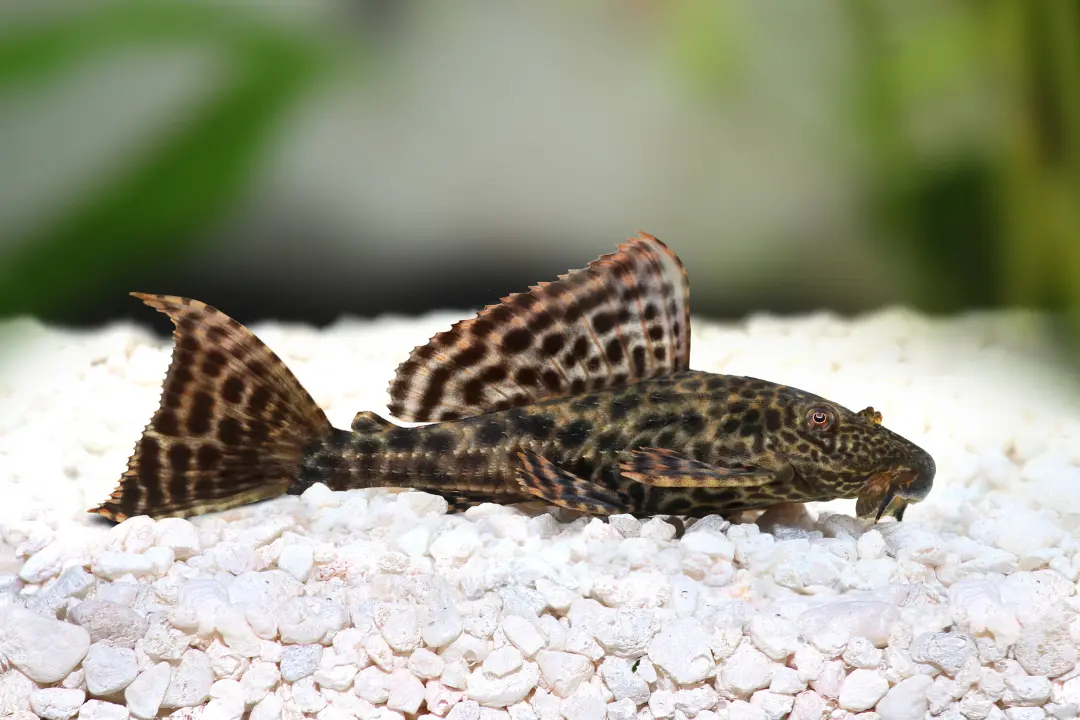
The historical story of sucker fish takes us back to the freshwaters of the globe. Fossils suggest that these ancient freshwater dwellers originally appeared in North America, later diversified and spread across other continents.
At the time being, almost 79 species of sucker fish are known to mankind, most of which call the freshwaters of North America their home. However, some species can be found in South America and Asia.
Sucker Fish Appearance
The stunning whiskered wonder of South American freshwater is generally classified into two categories. Both will be discussed under
True Suckers
A true sucker has an elongated and somewhat compressed body. The whole body is covered with scales except the head. These scales showcase a mesmerizing silvery or gold color when they come under direct sunlight
The head has a unique shape with a blunt snout that protrudes slightly over the downturned mouth. The lower lip of this captivating freshwater marvel is a little fleshy, ultimately leading to a sucker-like mouth. This adaptation allows them to cling to surfaces with surprising force. These lips also have taste buds that help the sucker fish in finding food.
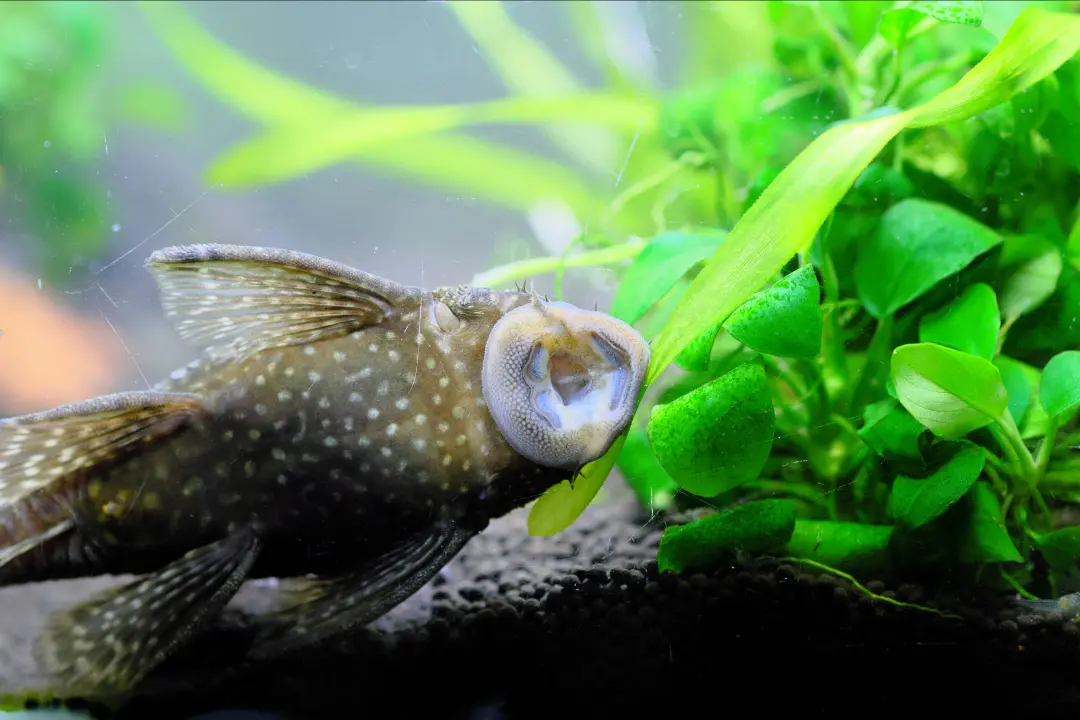
Their eyes are placed high on the head, giving them a wider view range. While the unique mouth structure allows them to effectively scrape and find algae or detritus from the sandy river and stream bottoms, this sharp vision enables them to see in low light and detect small prey
The dorsal fins help them to navigate in heavy currents. The size of the dorsal fin can vary depending on the species. For example, some like the white sucker have tall and prominent dorsal fins while others have small and more rounded ones.
Armored Catfish
The body armor of this intriguing fish is its identity, the sole unique character that differentiates it from its cousins. Instead of scales, the armored catfish has bony plates covering its whole body. These plates are called “scutes”. The scutes interlock with each other, forming a lightweight yet sturdy exoskeleton. This armor protects from predators.
This type of suckerfish has a more functional mouth. Their adaptation is a bit different from their true sucker cousins. Having stronger suction and rasping teeth, this fish can scrape algae from the waterbed and even other surfaces like driftwood. For example, the Albino Bristle-nose pleco has a special mouth adaptation, ideal for feeding on driftwood biofilm.
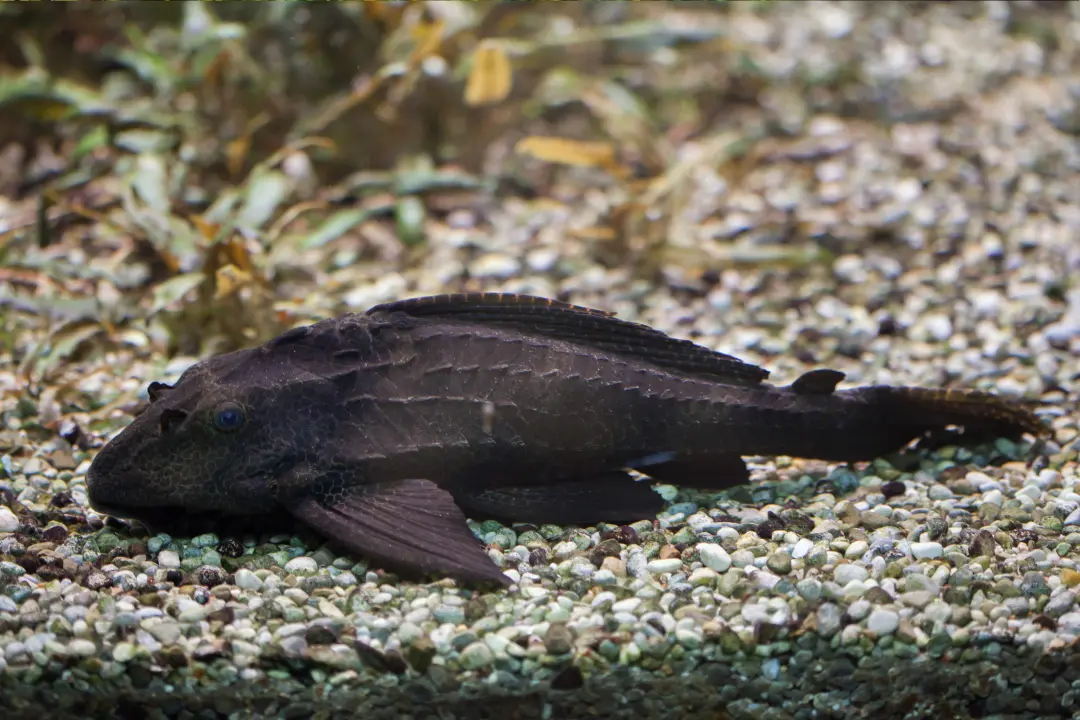
The catlike whiskers are another admirable feature. These whiskers are functional barbels that help in navigating in low light. The sensory barbels can also help in finding food from sandy substrates
This is only a small sample of the amazing realm of sucker fish anatomy. Every species has developed special adaptations that enable them to flourish in their particular settings. Even the physical changes of a male and a female of the same suckerfish species are extremely diverse. These bottom-dwelling fish are a marvel of natural creativity, from the strong suction of the armored catfish to the unique scraping tools of the genuine sucker.
Sucker Fish Life Span
The sucker fish is a true marvel of nature. Boasting long lifespans ranging from 5 to 30 years, this fish outlives most of its fishy companions.
As mentioned earlier the sucker fish has two distinct classes, both of which have different lifespans. Let’s see, how long does a sucker fish live
True Suckers
In the wild, the true sucker can live for about 10 to 20 years. However, in captivity, their lifespan ranges from 5 to 15 years. This huge lifespan difference is due to the free-roaming nature of the fish. Other factors that might directly affect the lifetime of a true sucker include the following

- Tank size
Due to its large body, this fish requires spacious tanks. Cramped-up life in small fish tanks might lead to shorter lifespans.
- Water Quality
As true suckers live in fresh waters, they require clean and well-maintained waters for healthy survival. Contaminated and unclean water can affect its health and overall lifetime. Thus, tank water filtration and regular change are crucial for this fish to thrive.
- Diet
There’s no denying that true suckers love munching on algae, however, fulfilling their nutritional needs is vital for their survival. Having an all-rounded diet that includes vegetables, algae, and organic matter is necessary.
Armored Catfish
Armored catfish are known for their longevity. Some species even live up to a remarkable 20 to 30 years even in captivity. Proper care plays a vital role in achieving this impressive lifespan. Here are some helpful points that may help increase their life span.
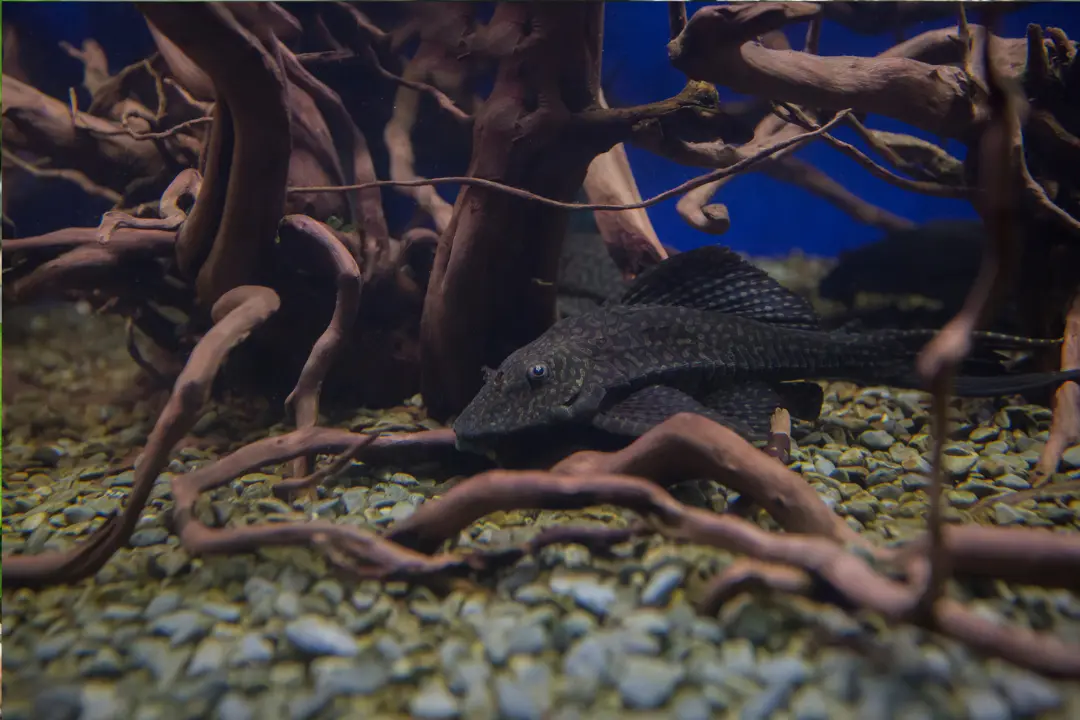
- Tank size
Just like true suckers, this fish requires a spacious tank as they can grow quite large. Cramped-up life in small fish tanks is as dangerous as they are for true suckers.
- Hiding spots
Armored catfish have a nocturnal nature, meaning that they are night dwellers and prefer resting during the day. Having enough hiding spots and resting caves in the fish tank will prevent the fish from stressing out.
- Diet
Having a diet with enough nutrients for the fish to stay healthy is vital for its long lifespan. Moreover, adding driftwood to the fish tank will contribute to its health by providing a source for biofilm to munch on.
Keep in mind that these are only broad recommendations. A sucker fish’s lifetime might vary based on its species and the kind of care it receives.
Sucker Fish Natural Habitat
Both categories of Suckerfish inhabit a wide variety of waters around the globe as if the whole world is their home. Let’s discuss the habitat of each category.
True Suckers
True suckers are primarily found in North America with a few species venturing into parts of Asia. They are known as true champions of slow-moving freshwater bodies like lakes, ponds, rivers, and streams.
The calm waters offer abundant sources of algae and detritus. The gentle currents allow this bottom-feeder fish to navigate and graze on food with ease. The riparian zone (the weedy edges of rivers) is ideal, considering the algae eater’s munchy nature.
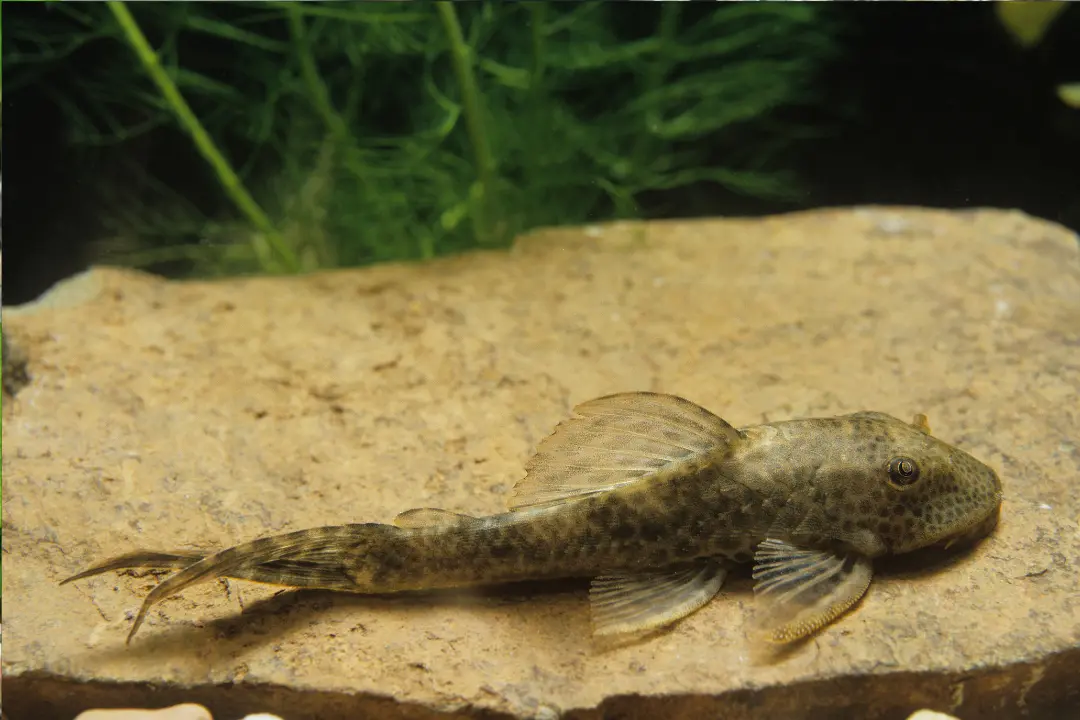
Some true suckerfish like the remoras also hail from saltwater regions. These saltwater suckerfish are the epitome of adaptability. Some of these are found in brackish water, they migrate between different waters, seasonally.
Although this fish is highly adaptable, it prefers freshwaters with calm currents, rocky bottoms, and moderate temperatures.
Armored Catfish
This fish hails from the freshwaters of South America’s tropical rivers. These warm and fast-flowing waters are no problem for the fish as it can cling to objects using its suction abilities.
Moreover, the submerged ecosystems and flooded forests provide a diverse food source for biofilm and organic materials to much on. These crowded jungles and rivers are ideal for their nocturnal nature as they provide plenty of hiding spots and resting spaces in the daytime
Sucker Fish Tankmates
The sucker fish behavior varies from specie to species. We suggest having similar-sized non-aggressive fish so no one bullies no-one. The compatibility of bottom feeders must be considered as territorial fish might outperform our sucker friend. However, here’s a breakdown
True Suckers
True suckers are surprisingly very social. They have an extrovert nature and prefer forming large schools to migrate from one place to another, seasonally. However, some of these might like to spend a solitary life.
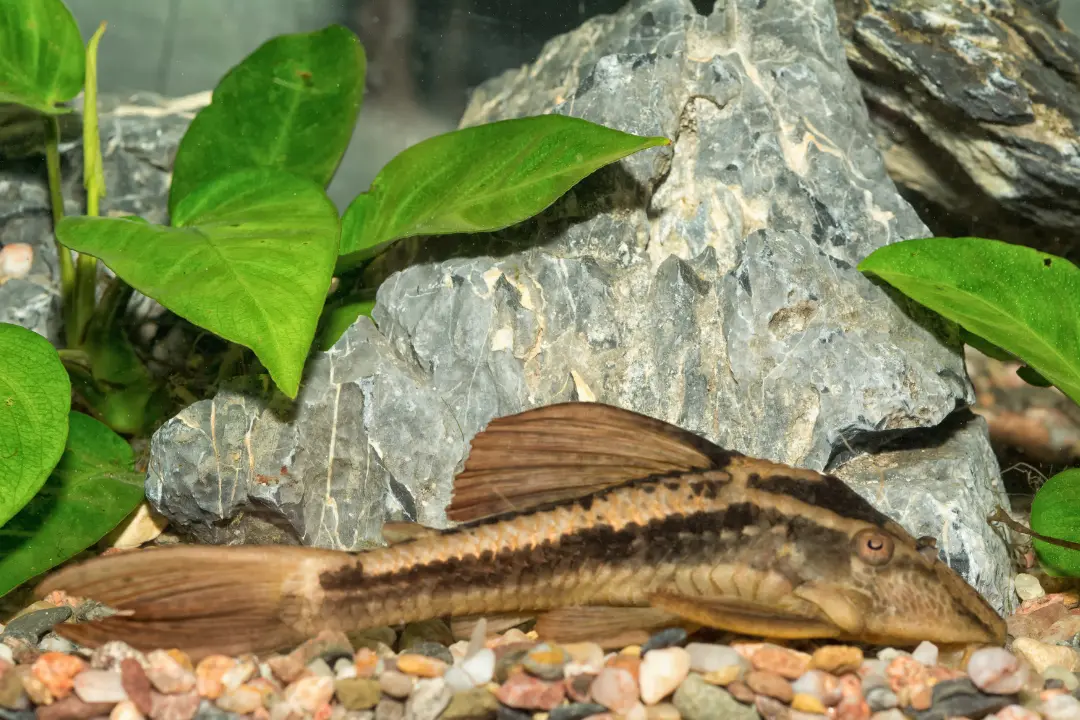
Most of the time, true suckers can be seen foraging the bottoms for food but they are considered a moderately active fish. This fish is often seen darting around the fish tanks with bursts of energy. Here are some tank mates for True suckers
- Corydoras Catfish
- Neon Tetras
- Harlequin Rasboras
- Cherry Shrimp
- Zebra Danios
- Guppies
- Platies
- Swordtails
- Mollies
- Otocinclus Catfish
This ain’t no fighter! True suckers are peaceful fish and it is highly unlikely that they will bother or hurt other fish in the tank. Being highly social, this fish even forms schools with other species of bottom-dwelling fish. While their peaceful nature is a plus, it can also lead to stress if they are housed with aggressive or larger tankmates.
Armored Catfish
Dwellers of the Night! armored catfish are mostly nocturnal, meaning that they are most active in the night. They often hide in plants, driftwood, or caves during the day, either to take a nap or avoid interactions.
Armored catfish prefer to live alone. However, they might form groups, only if the tank and number of fish are big enough. Here is a list of tankmates for Armored Catfish

- Tetras
- Guppies
- Mollies
- Platies
- Corydoras
- Swordtails
- Gouramis
- Rasboras
- Danios
- Shrimp
Territorial attitude toward other bottom feeders or fish that are comparable in size is completely normal. This behavior is more common for bigger species like the common pleco. Armored catfish are generally calm and only compete with tankmates, but when they sense competition for food or territory.
Sucker Fish Diet
Sucker fish have different nutritional requirements based on their species. Here are some commercial foods for your pleco
Good Partner Algae wafers Pleco Food
Hikari Tropical sinking wafers
To keep your sucker fish content and healthy, follow this breakdown:
True Suckers
True suckers mostly eat algae by scraping off rocks, driftwood, and water plants using their sucker-like mouthparts. Although algae make up most of their diet, true suckers also gain nutrition by eating blanched vegetables like Peas, cucumbers, and zucchini.

Similarly, these bottom feeders also much on the organic material that sinks to the bottom of the tank. A tiny amount of sinking fish food can be added to the tank to develop good bacteria that convert waste into detritus. However, adding too much can cause water contamination and health issues.
To meet the dietary requirements, certain bottom feeder tablets or flakes are provided. We suggest providing a mix of blanched vegetables, algae, and small invertebrates like crustaceans.
Note: Blanching is the process of quickly boiling the veggies to soften and facilitate eating.
Armored Catfish
As compared to the true suckerfish, the armored catfish eats algae as well. They also eat biofilm which is a thin coating of bacteria that forms on rocks, driftwood, and plants.
Due to its appetite for biofilm, having driftwood in the fish tank is ideal. The armored catfish uses the driftwood as a hiding spot and also grazes on the biofilm that forms on the wood sufficing as a vital source of cellulose and fiber.
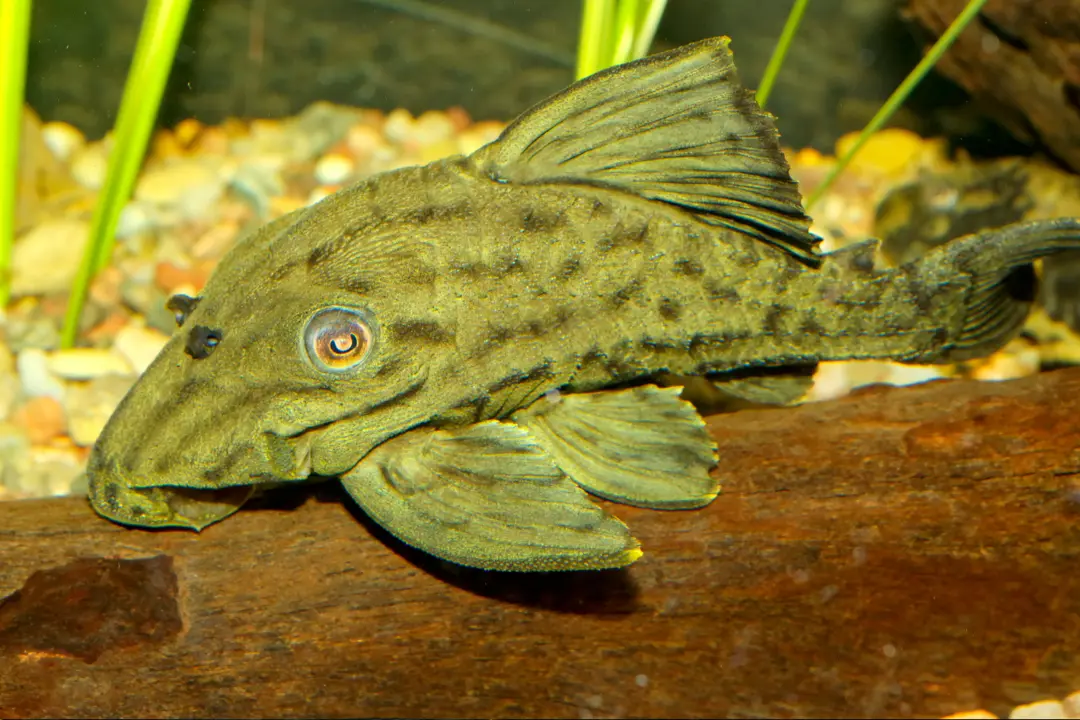
Adding feed that is specially made for bottom feeders Is essential. We suggest including algae wafers and vegetable matter. Catfishes can be messy eaters, so refrain from overfeeding. Clean the leftover food to avoid water contamination.
Remember that well-fed sucker fish consume algae more efficiently, making your aquarium cleaner and more attractive.
Best Aquarium for Sucker Fish
The sucker fish is popular among aquarists due to their distinctive looks and algae-eating habits. If you are wondering to keep this fascinating fish as your pet, Here’s a comprehensive tank guide.
Tank Size
The tank size depends on the species. As true suckers can grow quite big, they usually require large tanks of about 20+ gallons. However, the armored catfish is more demanding as it requires a bigger fish tank of about 50+ gallons. It’s best to research the specific tank requirements for your fish.
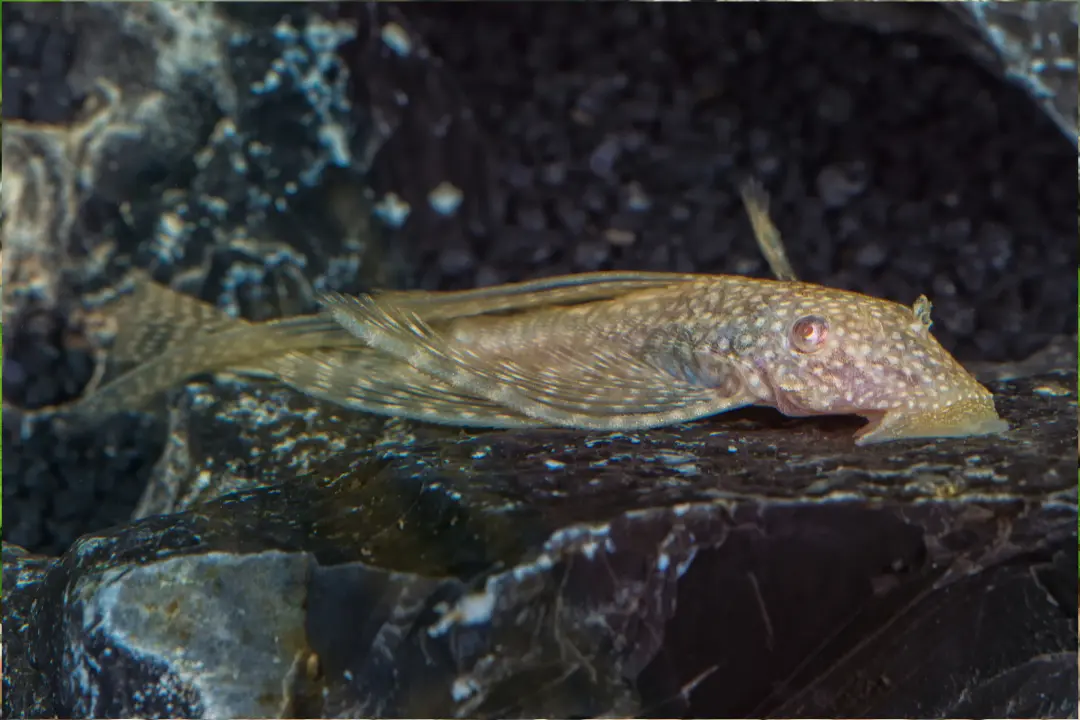
The water volume has to be considered as well, make sure that there is enough water for the fish to freely swim in.
Tank Parameters
The ideal water pH for a true sucker is 6.5 to 7.5, which makes its environment almost neutral. However, the armored catfish is more adaptable and can tolerate a wider range of pH 6.0 to 8.0. Both categories avoid extremely hard waters but the armored catfish can thrive in a slightly broader range of water hardness
Tank Water Temprature
True suckers prefer cooler water temperatures, ranging from 68 to 78 degrees Fahrenheit.On the other hand, the armored catfish like slightly warmer water temperatures of 72 to 82 degrees Fahrenheit.
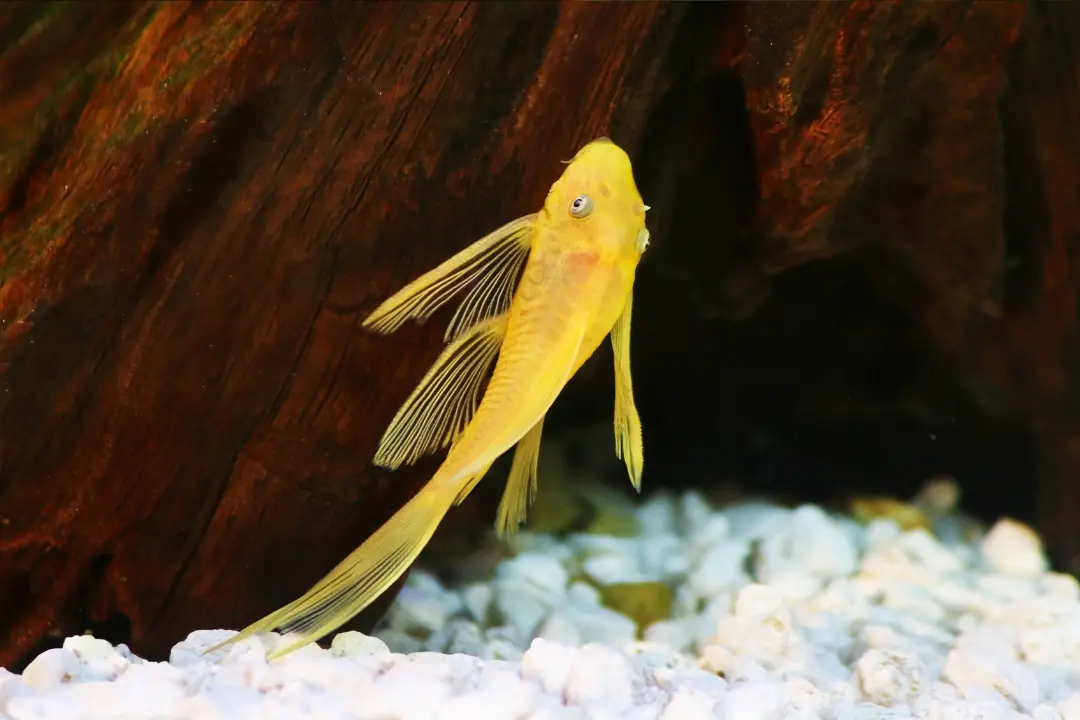
The true sucker likes calm water currents while the armored catfish like slightly stronger ones. We suggest investing in a high-quality water filter that can maintain an intermediary level of water flow and clean the water as well.
As discussed above, some suckerfish are nocturnal and like to rest in the day. Making a cave and hiding spots by using smooth rocks, driftwood, and plants can suffice. It also provides a sense of safety and protection.
Sucker Fish Breeding
There is a huge variety of sucker fish breeding process. Generally, most sucker fish follow the process given below.
In spring, the sucker fish moves upstream to find ideal waters for breeding. Slightly cool water of about 50 to 59 degrees Fahrenheit, moderate water flow, and rocky bottom is best. The rocky substrate provides a surface for the fish to lay eggs on.
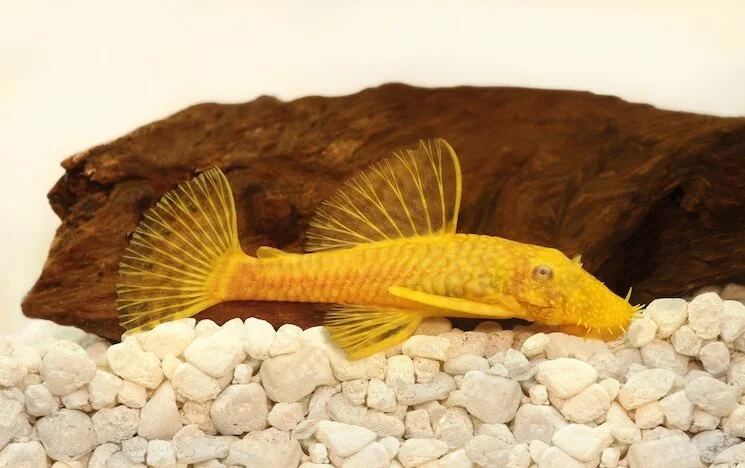
Image Source: everythingfishkeeping
The males tend to spawn at the breeding ground earlier, then the females follow them. Once both arrive, the females attract the males by displaying their colorful and swollen abdomen. While the females peacefully dazzle the waters with their beauty, the males often compete with others to win a partner.
Then comes the dance! When the pair is formed, the male and female start swimming near each other in a beautiful synchronized way. The female continuously lays eggs while the male keeps depositing sperm. The rocks below, catch all the deposited substances. The eggs get fertilized and stick to the rocks due to their adhesive nature.
After about one to two weeks, the eggs hatch. Initially, the larva sticks to the rocks and eats its leftover yolk sacks for nutrition. Once all the yolk deposit is consumed, the larva is free to dwell in the unknown waters.
Types of Sucker Fish
The variety of sucker fish species is as diverse as colors in a palette. Although the general attributes of our sucker friends are discussed, there is still much to learn. Following are some types of suckerfish.

- river carp sucker
- Remoras
- white sucker
- Bristlenose Pleco
- Oto catfish
- Zebra Pleco
- small mouth buffalo
- Trinidad Plecostomus
- Blue sucker
FAQ’s
Q1) Are sucker fish good to eat
Sucker fish aren’t eaten in many regions of the world. In some cultures, specific species are consumed, but still not widely preferred. Due to their role in regulating the ecosystem, people avoid consuming them as seafood.
Q2) What is sucker fish lifespan
The lifespan depends on what species we are talking about. Some species of sucker fish can live up to 10 years in captivity if provided with proper care. Although, due to predation and other environmental factors many of these have shorter life spans even in the wild.
Conclusion
In today’s article, we discussed all you need to know about the Suckerfish. We uncovered its 2 major categories and how they look. Moreover, we explored its natural habitat and how you should set up its tank. The Ideal tankmates for Suckerfish along with its diet and breeding are also discussed. To sum it all we discussed all the major topics to become the best sucker fish caretaker.
Let me ask: Have you ever considered adding a sucker fish to your tank? Let us know in the comments below.
Additionally, Recognizing the importance of these animals in the web of life is crucial. Educating the world about its preservation is vital for maintaining the beauty, health, and the Super-Ecosystem of planet Earth.
In conclusion, the sucker fish has a wonderful underwater world of its own. This fish amazes amateurs and experts with its unique adaptations and characteristics. Due to its eating habits, it plays a vital role in maintaining the balance of the marine environment, which is a crucial ecological requirement.

